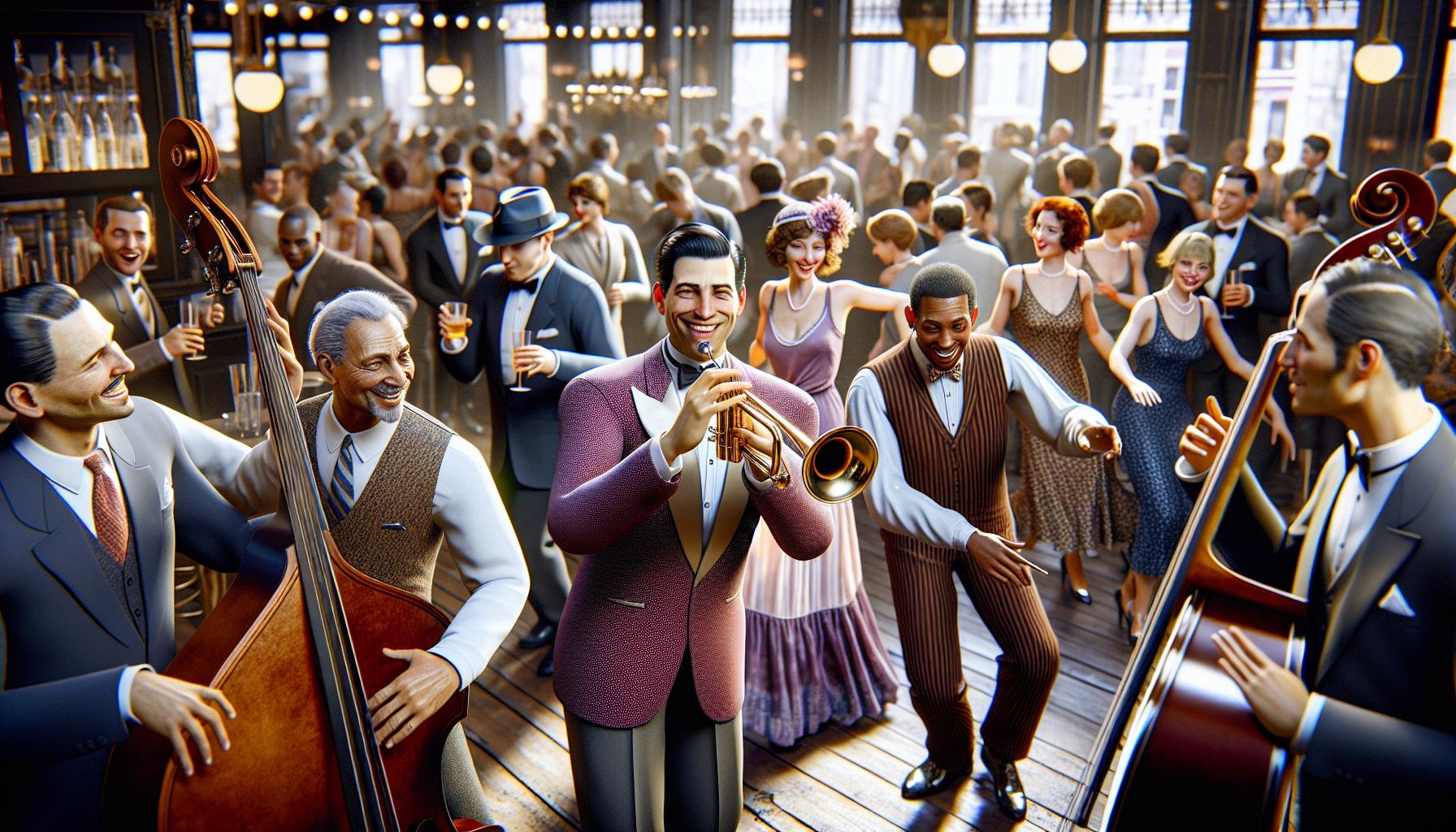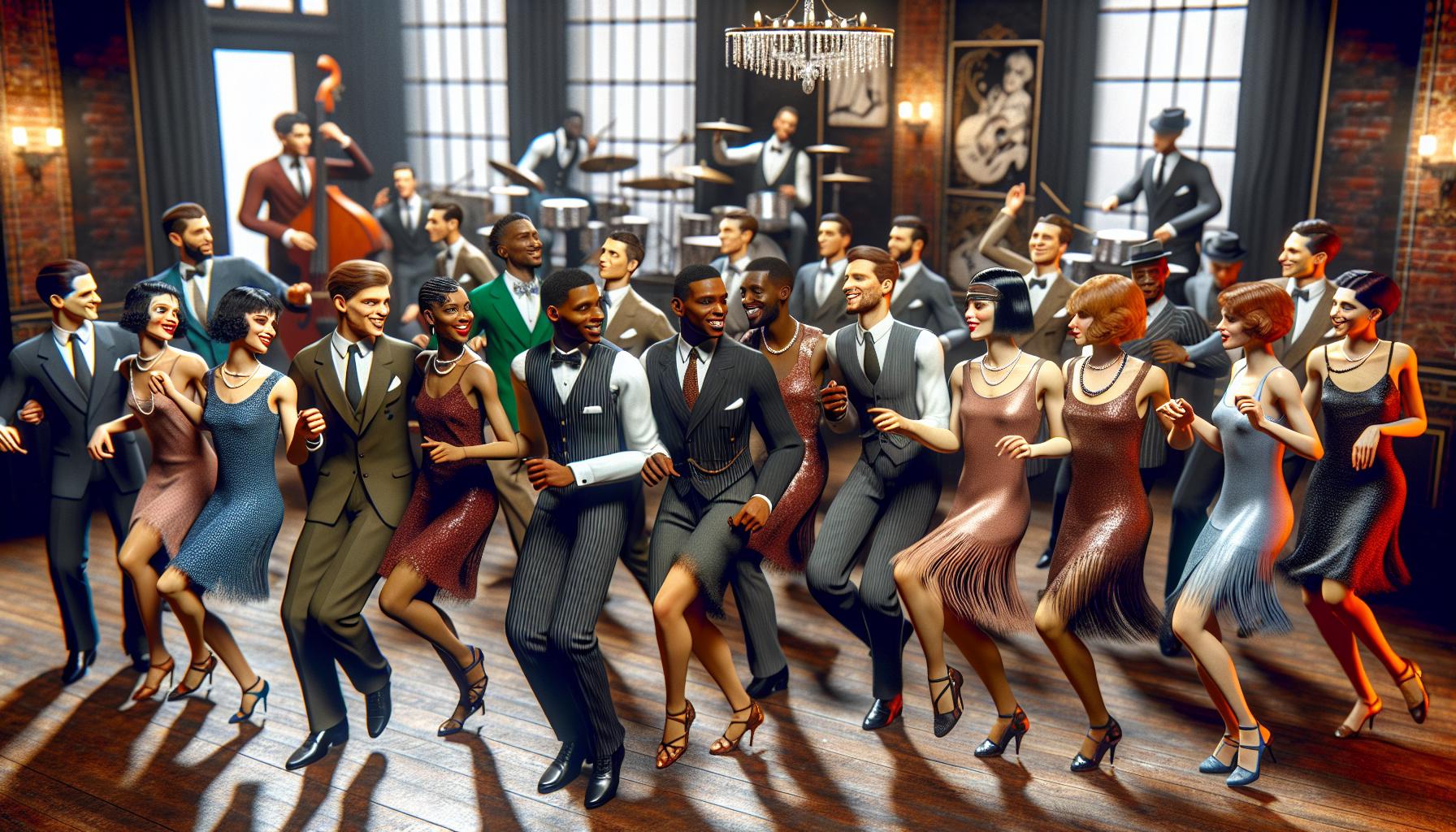The 1920s was a vibrant decade that transformed the landscape of entertainment in America. It was a time when jazz music filled the air, flappers danced the Charleston, and silent films gave way to the talkies. This era, often referred to as the Roaring Twenties, reflected a society bursting with creativity and a desire for new experiences.
As I dive into the world of 1920s entertainment, I’ll explore how these cultural shifts shaped modern entertainment. From the rise of radio to the glamour of Broadway, the decade set the stage for trends that still resonate today. Join me as I uncover the captivating stories and influential figures that made the 1920s a pivotal moment in entertainment history.
Key Takeaways
Cultural Transformation: The 1920s, known as the Roaring Twenties, marked a significant shift in American entertainment, characterized by a surge in creativity and new experiences.
Rise of Jazz: Jazz music, led by artists like Louis Armstrong and Duke Ellington, became the defining sound of the decade, symbolizing liberation and innovation in the arts.
Dance and Fashion: Flappers epitomized the era’s boldness, rejecting traditional norms with their fashion and attitudes, and influencing trends in music and dance, particularly the Charleston.
Talkies Revolutionize Film: The transition from silent films to talkies, exemplified by “The Jazz Singer,” transformed the cinematic experience and paved the way for modern filmmaking.
The Influence of Radio: Radio emerged as a unifying medium, broadcasting music and entertainment, and fostering a shared cultural experience across the nation.
Iconic Figures: Notable personalities, like Bessie Smith and Charlie Chaplin, shaped the entertainment landscape, leaving enduring legacies that continue to inspire contemporary artists.
1920s Entertainment
The 1920s, often referred to as the Roaring Twenties, represented a significant cultural shift in American entertainment. This era witnessed the rise of jazz music, which became a defining soundtrack for a generation eager to embrace new rhythms and social changes. Iconic figures like Louis Armstrong and Duke Ellington brought vibrant tunes to life, captivating audiences in dance halls and nightclubs.
Flappers emerged during this time, symbolizing the era’s newfound freedom. Young women rejected traditional norms, sporting short dresses, bobbed hair, and a bold attitude. Their influence permeated everything from music to fashion, shaping the decade’s cultural landscape.
The entertainment industry transformed dramatically with the advent of talkies. Silent films, once the standard, paved the way for synchronized sound in movies like “The Jazz Singer,” released in 1927. This technological leap captured audiences’ attention and marked the beginning of a new cinematic era.
Radio also gained prominence in the 1920s, connecting Americans like never before. Broadcasts featured music, news, and entertainment, creating a shared cultural experience across the nation. Shows like “Amos ‘n’ Andy” became household names, illustrating the power of audio storytelling.
Broadway flourished during this decade, presenting dazzling musicals and plays that drew large crowds. Productions like “Show Boat” and “Rhapsody in Blue” showcased emerging talents and innovative storytelling, solidifying the stage as a centerpiece of American culture.
The 1920s reflected an irresistible desire for excitement and change, shaping the foundations of modern entertainment and leaving a lasting legacy on multiple creative fronts.
Popular Forms Of Entertainment

The 1920s introduced diverse entertainment forms, each reflecting the era’s dynamism. Music, theater, and literature flourished, leaving an indelible mark on American culture.
Music And Dance
Jazz music defined the decade, with artists like Louis Armstrong and Duke Ellington leading the charge. Jazz clubs and dance halls thrived, attracting large crowds eager to embrace the lively rhythms. The Charleston became the dance sensation of the time, symbolizing the exuberance of the Roaring Twenties. This period also saw the rise of dance marathons, where couples competed for endurance, showcasing the era’s competitive spirit and love for performance.
Theater And Film
The theater blossomed with Broadway productions. Musicals like “Show Boat” captured audiences with their innovative storytelling and memorable scores. The film industry transformed dramatically with the arrival of talkies. “The Jazz Singer,” released in 1927, marked a pivotal moment in cinema, introducing synchronized sound and captivating audiences. Silent films, once dominant, gave way to dialogue-driven narratives, shaping the future of filmmaking and enhancing the cinematic experience.
Literature And Poetry
Literature thrived during the 1920s, with authors like F. Scott Fitzgerald and Ernest Hemingway gaining recognition. The Lost Generation, a group of disillusioned writers, captured the essence of post-war discontent and the search for meaning through their works. Poetry flourished as well, with figures like Langston Hughes and T.S. Eliot experimenting with form and themes. Their works reflected societal changes, paving the way for modern literature and inspiring future generations of writers.
The Impact Of Radio And Jazz

The 1920s marked a pivotal moment in entertainment, with radio and jazz playing crucial roles in shaping American culture. These innovations transformed how people experienced music and information, ushering in a new era of connectivity and creativity.
Rise Of Jazz Music
Jazz emerged as a defining musical genre of the 1920s, characterized by its improvisational style and unique rhythms. Artists like Louis Armstrong and Duke Ellington paved the way for this vibrant sound, performing in bustling jazz clubs and dance halls. The Charleston and other popular dances accompanied jazz tunes, drawing crowds eager to experience the energy of this revolutionary music. Jazz became synonymous with the Roaring Twenties, embodying the spirit of freedom and innovation that defined the decade. Its influence extended beyond the dance floor, inspiring a plethora of cultural movements and artistic expressions. Notably, jazz laid the groundwork for future genres, including rhythm and blues and rock and roll.
Influence Of Radio Broadcasting
Radio broadcasting emerged as a powerful medium in the 1920s, significantly impacting American entertainment. As radio stations proliferated, families gathered around their sets to listen to music, news, and live performances. Programs such as “Amos ‘n’ Andy” became household staples, providing entertainment that transcended geographic boundaries. With radio, artists reached wider audiences than ever before, allowing them to share their music and messages effectively. This new form of media not only connected communities but also sparked national conversations about culture and politics. The radio’s ability to disseminate information rapidly contributed to a shared cultural experience, fostering a sense of unity among Americans during a time of significant change.
Social Changes Reflected In Entertainment

Social change during the 1920s dramatically influenced various forms of entertainment. Jazz music mirrored the era’s spirit of liberation and rebellion. Clubs and dance halls thrived as popular venues where jazz ensembles, featuring artists like Louis Armstrong and Duke Ellington, captivated diverse audiences. The emergence of jazz dance styles, including the Charleston, became synonymous with the decade’s dynamic cultural climate.
Flappers, with their bold fashion and attitudes, redefined societal norms. Their influence permeated music and dance, inspiring performers to adopt more liberated styles. The rise of the flapper culture highlighted the growing independence of women, paralleling advancements in women’s rights. This shift was reflected not just in fashion, but also in the narratives portrayed in films and literature of the time.
The transition from silent films to talkies represented a significant change in the entertainment landscape. Films like “The Jazz Singer” introduced synchronized sound, transforming movie-going experiences. Audiences became enthralled with the ability to hear actors speak, sing, and convey emotions, leading to a boom in film production and attendance. The advent of sound in cinema also underscored society’s embrace of new technology.
Radio emerged as a prominent medium during this decade, reshaping how Americans consumed entertainment. By broadcasting music, news, and radio dramas, it connected families and communities across the nation. Popular shows like “Amos ‘n’ Andy” became staples in many households, reflecting the shared cultural experience of the time.
Broadway experienced a renaissance with innovative plays and musicals. Productions such as “Show Boat” and “Rhapsody in Blue” showcased emerging talents while addressing themes relevant to contemporary audiences. The allure of Broadway illustrated the blending of entertainment with social commentary, capturing the zeitgeist of the Roaring Twenties.
Literature also contributed to this transformative era. Authors like F. Scott Fitzgerald and Ernest Hemingway explored post-war disillusionment, encapsulating societal tensions through their poignant narratives. This literary movement paralleled the innovative spirit of jazz, both expressing a desire for change and a break from tradition.
Overall, the entertainment of the 1920s vividly reflects the social changes of the era. Each form of entertainment, from music to literature, contributed to a cultural tapestry that defined a pivotal decade in American history.
Iconic Figures Of The 1920s Entertainment Scene
Iconic figures emerged in the 1920s, shaping the entertainment landscape and influencing culture across various mediums.
- Louis Armstrong
Louis Armstrong revolutionized jazz music with his innovative trumpet playing and unique vocal style. His performances in clubs and on the radio captured the spirit of the era, making him a household name and a symbol of jazz’s rise. - Duke Ellington
Duke Ellington, a pioneering bandleader and composer, played a critical role in elevating jazz to an art form. His orchestral arrangements and performances at the Cotton Club showcased the genre’s sophistication and complexity, winning widespread acclaim. - Bessie Smith
Known as the “Empress of the Blues,” Bessie Smith brought blues music to mainstream audiences. Her powerful voice and emotional delivery on songs like “St. Louis Blues” resonated deeply, influencing countless artists and highlighting the struggles and joys of African American life. - Charlie Chaplin
Charlie Chaplin, a leading figure in silent films, captured hearts with his iconic character, The Tramp. His films, marked by humor and social commentary, laid the groundwork for future cinematic storytelling, transitioning seamlessly into the era of talkies. - Al Jolson
Al Jolson, often referred to as the “World’s Greatest Entertainer,” starred in “The Jazz Singer,” the first feature-length talkie. His ability to connect with audiences through song and performance made him a pivotal figure in American cinema. - Zelda Fitzgerald
Zelda Fitzgerald, an influential flapper and writer, became a cultural icon for her spirited lifestyle. Her influence extended into literature through her own writing and her relationship with her husband, F. Scott Fitzgerald, embodying the 1920s’ themes of liberation and excess. - Eugene O’Neill
Eugene O’Neill redefined American theater with his profound plays, addressing complex human emotions and societal issues. His works, such as “Long Day’s Journey Into Night,” captured the struggles of the human experience, drawing critical attention to Broadway. - Langston Hughes
Langston Hughes, a prominent figure of the Harlem Renaissance, used poetry and prose to capture the essence of African American life. His works addressed social issues and reflected the cultural aspirations of the time, inspiring future generations of writers.
These figures played pivotal roles in transforming entertainment during the 1920s, leaving lasting legacies that continue to shape various artistic expressions today. Their contributions not only entertained but also reflected and influenced the dynamic cultural landscape of the Roaring Twenties.
Modern Music Film And Literature
The 1920s truly reshaped the landscape of American entertainment. This vibrant decade laid the foundation for modern music film and literature. The rise of jazz not only defined the era but also influenced countless genres that followed. Flappers challenged societal norms and brought a fresh perspective to culture.
As I reflect on this transformative time I can’t help but appreciate the creativity and innovation that emerged. The transition to talkies and the growth of radio connected people in ways previously unimaginable. Each aspect of entertainment from Broadway to literature contributed to a rich cultural tapestry that still resonates today. The stories and figures of the 1920s continue to inspire and shape our entertainment landscape.